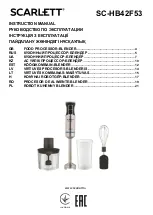
Embedded Trace Macrocell
ARM DDI 0500D
Copyright © 2013-2014 ARM. All rights reserved.
13-22
ID021414
Non-Confidential
Table 13-12
shows the TRCTSCTLR bit assignments:
The TRCTSCTLR can be accessed through the internal memory-mapped interface and the
external debug interface, offset
0x030
.
13.8.10 Synchronization Period Register
The TRCSYNCPR characteristics are:
Purpose
Controls how often periodic trace synchronization requests occur.
Usage constraints
•
You must always program this register as part of trace unit
initialization.
•
Accepts writes only when the trace unit is disabled.
Configurations
Available in all configurations.
Attributes
See the register summary in
Table 13-3 on page 13-10
.
Figure 13-12
shows the TRCSYNCPR bit assignments.
Figure 13-12 TRCSYNCPR bit assignments
Table 13-13
shows the TRCSYNCPR bit assignments.
The TRCSYNCPR can be accessed through the internal memory-mapped interface and the
external debug interface, offset
0x034
.
Table 13-12 TRCTSCTLR bit assignments
Bits
Name
Function
[31:8]
-
Reserved,
RES
0
[7]
TYPE
Single or combined resource selector
[6:4]
-
Reserved
[3:1]
SEL
Identifies the resource selector to use
31
0
RES
0
4
5
Period
Table 13-13 TRCSYNCPR bit assignments
Bits
Name
Function
[31:5]
-
Reserved,
RES
0.
[4:0]
PERIOD
Defines the number of bytes of trace between synchronization requests as a total of the number of bytes generated
by both the instruction and data streams. The number of bytes is 2
N
where N is the value of this field:
•
A value of zero disables these periodic synchronization requests, but does not disable other
synchronization requests.
•
The minimum value that can be programmed, other than zero, is 8, providing a minimum synchronization
period of 256 bytes.
•
The maximum value is 20, providing a maximum synchronization period of 2
20
bytes.
















































